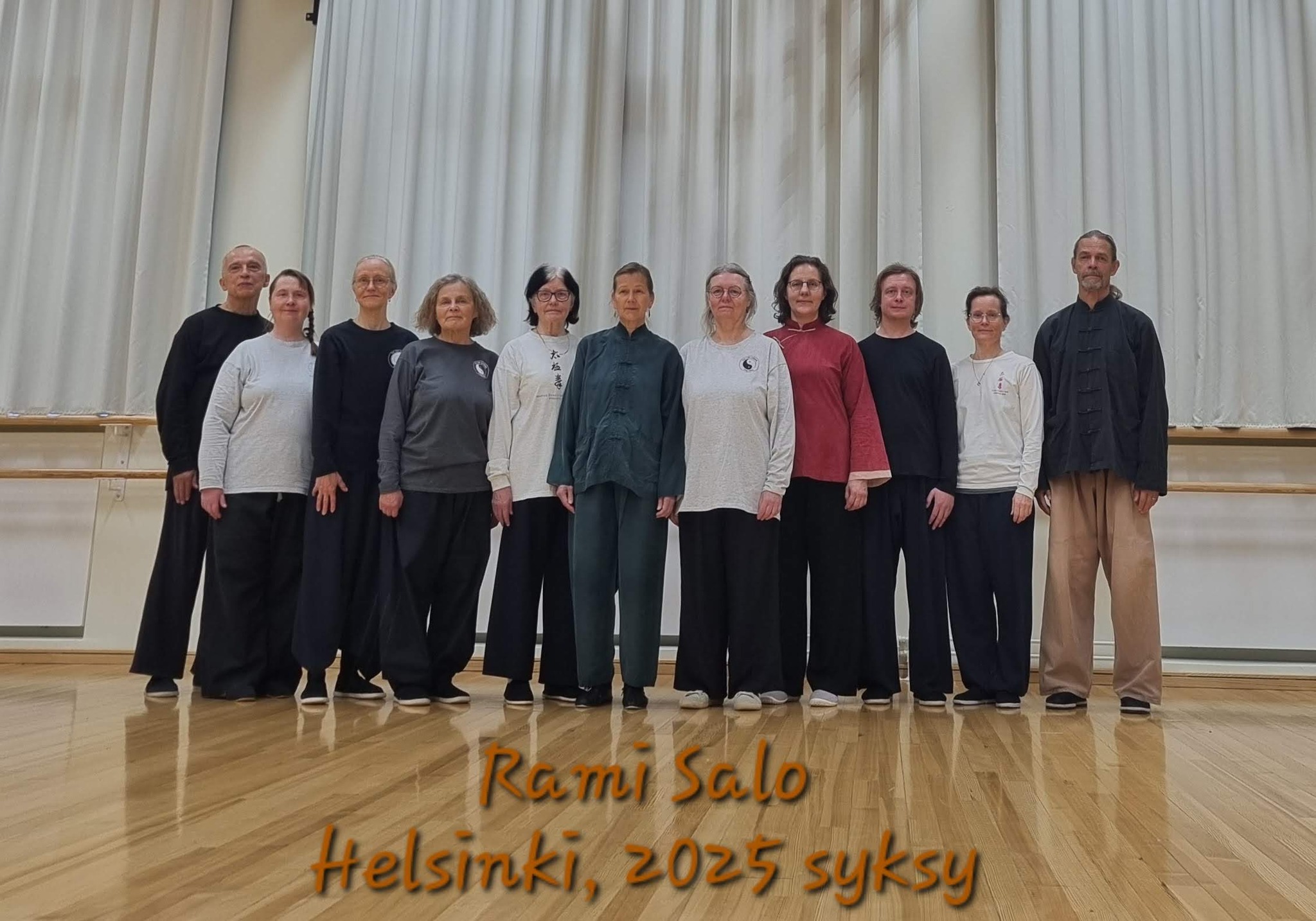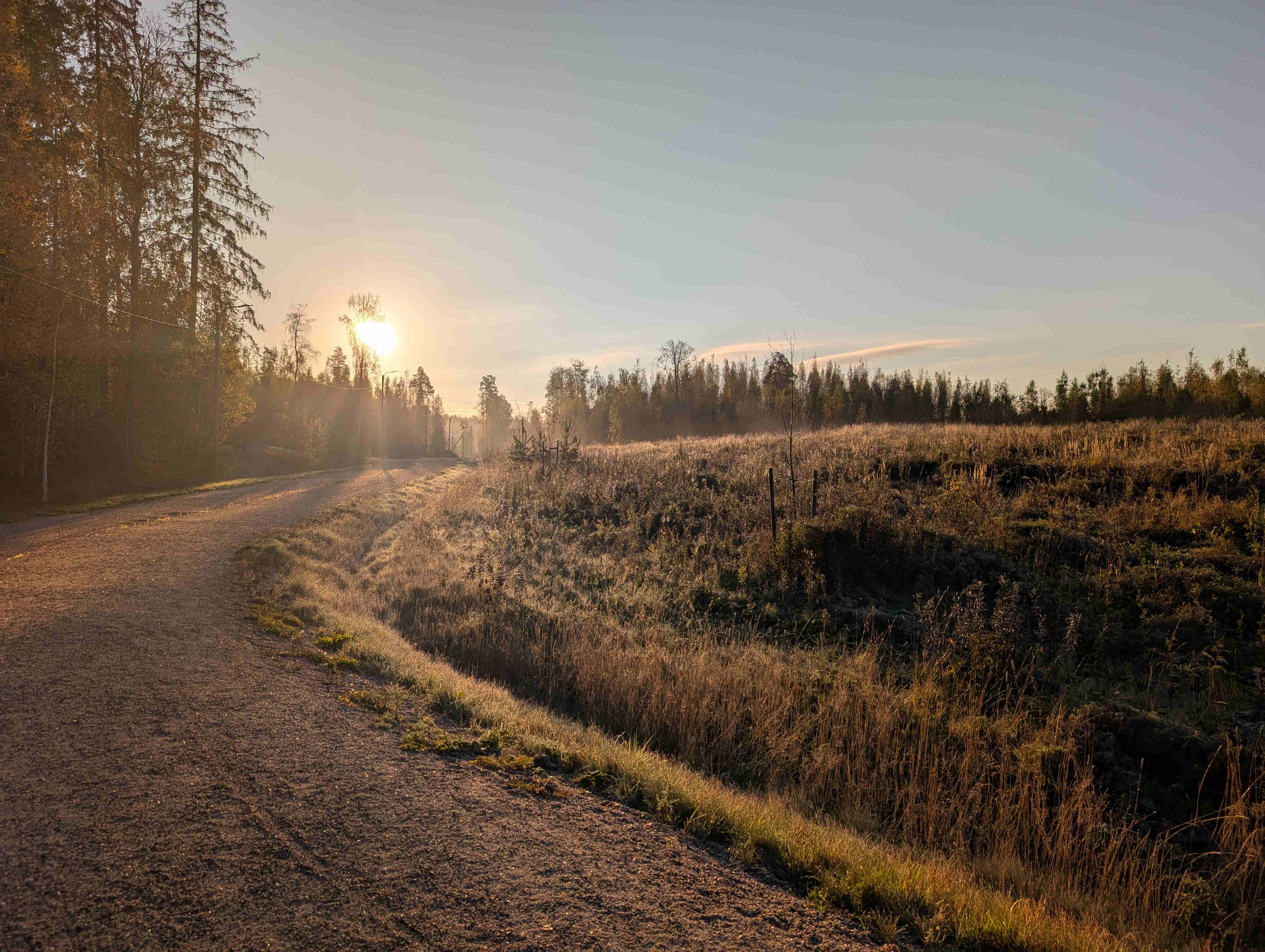I once read something like this: The two most important things in any practice are to start practicing, and to continue practicing. Don't stop, as my teacher said in his workshop in Helsinki a week ago.
This time we focused especially on this idea of always continuing to move, seamlessly shifting from one movement to the next. You could think that from the starting movement to the ending movement, there is no stopping. Each movement just transforms into the next; the new one begins before the previous one ends. The motion never stops.
In contrast let your ordinary, everyday thinking come to a stop. So that you can be fully aware of the practice, your whole body, and everything happening around you.

This way, you may find new places within your body - the extremes, the limits, which is always nice to hear from other practitioners. You can feel your toes and fingers, and everything between. Your ankles shift angles. Your knees and elbows bend or stretch. Your hips and shoulders open to almost all directions. Your waist turns and turns just by changing direction. Your arms circle. Your wrists rotate. And your weight constantly shifts, even when the posture seems still. The sinking continues until the direction changes.
As you connect all parts of your body, one way to deepen your body awareness is to distinguish between the upper and lower body. Usually the lower body leads and the upper body follows, just slightly delayed - yet the whole body remains connected.
If you continue moving at a steady pace and find more and more space as you go further and further, the movement naturally slows down. This also means that the bigger your movements are, the faster you actually have to move to stay in rhythm with those practicing smaller movements. Master has been talking about this also, especially when practicing with kids.

When talking about not stopping, I must also mention tíng, to stop. By this the teacher means to hold your posture, yet in the mind always continue the movement. The intention, yi, should always be present. It guides your focus, your gaze, your head, and the rest of your body - in that order. Keep your gaze on the horizon so you can sense everything around you, though still watching your hands at the same. You should know what your hands are doing and where you step, but keep your eyes open and look ahead.
Even when we count movements and stop in seemingly static postures between them, we are still practicing movements. And when you begin to practice a specific movement, you actually start from the previous one, continuing that and gradually transforming into the one you were about to practice.
After the workshop, I followed my teacher to help in their farm, without stopping in home in between. And as for never stopping, I may finish this writing for now, but the practice continues. See you on the European tour next month.